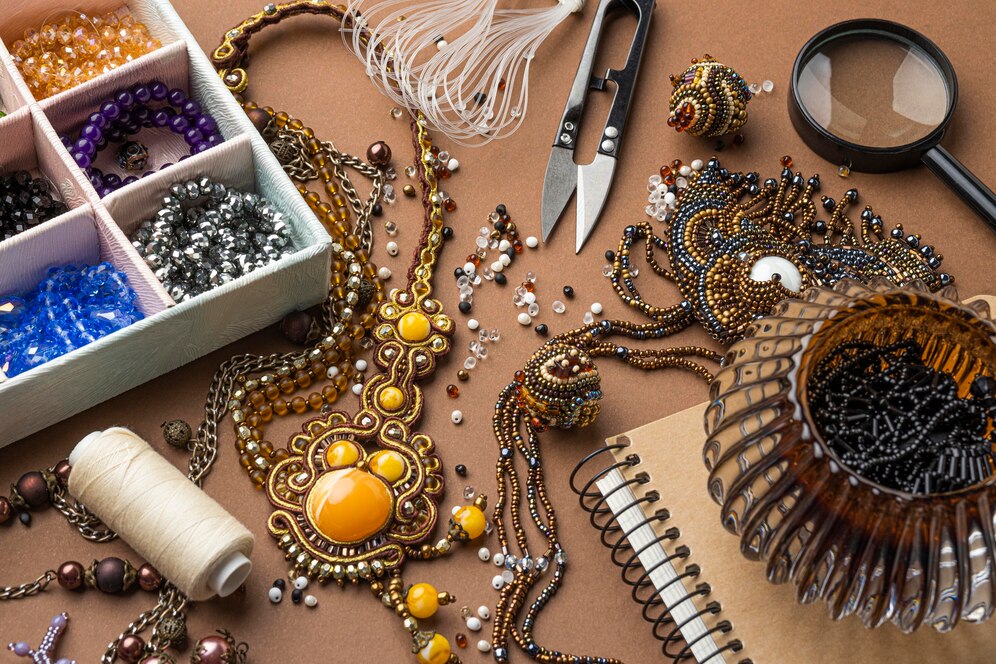Jewelry has been an integral part of Indian culture for centuries, reflecting tradition, status, and personal identity. Among the many forms of jewelry worn across India, gold, Kundan, and Polki hold a special place, symbolizing heritage, prosperity, and timeless beauty. Each of these styles carries deep historical significance and remains relevant in contemporary fashion.
The Timeless Allure of Gold
Gold is more than just a precious metal in India it is an essential part of cultural and religious practices. It is associated with wealth, prosperity, and divine blessings. From ancient times, gold jewelry has been used as a form of investment, passed down through generations as an heirloom. Indian households often consider gold to be a security asset, making it an indispensable part of weddings and other significant ceremonies.
The significance of gold jewelry is particularly evident in Indian weddings, where brides adorn themselves with elaborate gold ornaments, including necklaces, bangles, earrings, and nose rings. The concept of ‘Solah Shringar’ the sixteen adornments of a bride heavily incorporates gold jewelry to enhance beauty and bring good fortune. Gold is also linked to Hindu deities, with offerings made in temples and religious functions often involving gold ornaments.
The Grace of Kundan Jewelry
Kundan jewelry is one of the oldest forms of Indian gemstone ornamentation, dating back to the Mughal era. It involves intricate designs where highly refined gold foils are used to set uncut gemstones, creating a regal and exquisite appearance. This type of jewelry is known for its elaborate craftsmanship, requiring skilled artisans to meticulously place each stone in an elaborate framework.
Kundan jewelry is predominantly associated with Rajasthan, where it flourished in royal courts. It remains a preferred choice for bridal wear due to its ornate and grand aesthetic. Unlike gold jewelry, which emphasizes the metal itself, Kundan pieces highlight the beauty of embedded gemstones, often featuring rubies, emeralds, and diamonds. Today, this art form continues to evolve, blending traditional motifs with modern designs, making it a sought-after accessory for festive occasions.
The Vintage Charm of Polki
Polki jewelry, similar to Kundan, also traces its roots back to the Mughal period. However, unlike Kundan, which uses refined gold foils, Polki jewelry features uncut, unpolished diamonds set in gold. This gives it a more rustic and antique appearance, making it a favorite among those who appreciate vintage and heirloom aesthetics.
Polki jewelry is considered more valuable than Kundan due to the presence of uncut diamonds, often making it a statement piece for weddings and grand events. The intricate setting of diamonds in a traditional framework showcases the skill of artisans who preserve age-old techniques while infusing contemporary elements. Brides often choose Polki jewelry for its grandeur, pairing it with elaborate ensembles to complete their bridal look.
Conclusion
The cultural significance of gold, Kundan, and Polki jewelry extends beyond mere adornment. These jewelry styles represent heritage, craftsmanship, and emotional connection, making them timeless symbols of Indian tradition. Whether as an investment, a part of religious practices, or an artistic expression, these jewelry styles continue to captivate and define the essence of Indian fashion.

